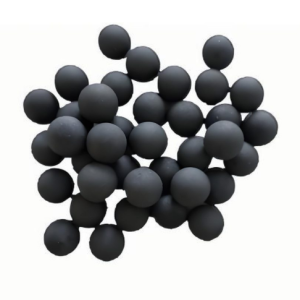Discover Premium Ceramic Products | Durability & Elegance United | Advanced Ceramics
1. Introduction
Just 24 hours ago, a major materials science breakthrough was announced by researchers at the Fraunhofer Institute: a new sintering technique that enhances the thermal shock resistance of silicon carbide (SiC) components by over 30%. This development is already influencing the design of next-generation silicon carbide crucibles used in semiconductor and metallurgical industries. With demand for high-performance ceramics surging, understanding what sets silicon carbide crucibles apart has never been more relevant.

Silicon carbide crucibles are prized for their exceptional hardness, thermal conductivity, and resistance to chemical corrosion—even at temperatures exceeding 1,600°C. But not all SiC crucibles are created equal. In this article, we’ll compare different types, analyze their composition and manufacturing methods, and examine how they stack up against alternatives like silicon nitride and boron carbide.
2. Silicon Carbide vs. Competing Ceramics
When selecting a refractory material for high-temperature applications, engineers often weigh silicon carbide against boron carbide and silicon nitride. Each has unique strengths.
Boron carbide vs silicon carbide is a common comparison. Boron carbide is harder—ranking just below diamond on the Mohs scale—but it’s significantly more expensive and less thermally conductive. This makes it ideal for armor and abrasives, but less practical for crucibles that must evenly distribute heat.
Silicon nitride, on the other hand, offers superior fracture toughness and thermal shock resistance. However, it lacks the thermal conductivity of silicon carbide. While a silicon nitride crucible factory might produce components for aerospace sensors, silicon carbide remains the go-to for metal melting and glass processing due to its ability to handle rapid heating cycles without cracking.
3. Types of Silicon Carbide Crucibles and Manufacturing Methods

Silicon carbide crucibles come in several forms, primarily differentiated by their binder and sintering process:
- Reaction-bonded silicon carbide (RBSiC): Made by infiltrating porous carbon preforms with molten silicon. RBSiC silicon carbide tile blocks and crucibles offer high strength and near-net-shape precision.
- Sintered silicon carbide (SSiC): Uses fine SiC powder with sintering aids like boron and carbon. These crucibles boast higher purity and better corrosion resistance but are costlier.
- Nitride-bonded silicon carbide (NBSiC): Fired in a nitrogen atmosphere, offering good thermal shock resistance and lower cost—ideal for industrial furnaces.
Each method affects porosity, density, and maximum service temperature. For instance, RBSiC crucibles are often used in aluminum foundries, while SSiC variants serve in high-purity semiconductor crystal growth.
4. Beyond Crucibles: The Expanding Universe of Silicon Carbide Ceramics
While the silicon carbide crucible remains a cornerstone of high-temp processing, SiC’s versatility extends far beyond. The same material properties enable a wide array of products:
In industrial settings, you’ll find silicon carbide burner nozzles, silicon carbide brick linings, silicon carbide ceramic tubes for furnace use, and even silicon carbide thermocouple protection tubes. These components leverage SiC’s oxidation resistance and mechanical stability under load.

Surprisingly, silicon carbide has also entered the culinary world. High-end kitchenware now includes silicon carbide ceramic baking dishes, silicon carbide ceramic dinner plates, and even silicon carbide ceramic butter dishes with lids. Brands like Staub have explored silicon carbide baking dish Staub lines that combine durability with even heat distribution—ideal for casseroles and roasting.
Other niche applications include silicon carbide ceramic serving platters, silicon carbide blue white porcelain plates, and silicon carbide ceramic children’s plates—valued for their chip resistance and non-toxic surface.
5. Specialized Components: Discs, Pipes, and Structural Elements
Silicon carbide’s utility isn’t limited to containers or tableware. Precision-engineered parts like silicon carbide discs serve in valves and taps—think silicon carbide ceramic disc taps or silicon carbide ceramic quarter turn taps—where wear resistance is critical.
In fluid handling, silicon carbide ceramic pipes and silicon carbide ceramic plumbing pipes offer unmatched corrosion resistance, especially in aggressive chemical environments. Similarly, silicon carbide porous ceramic tubes are used in filtration systems for molten metals.
For high-temperature insulation, silicon carbide ceramic tube insulators and silicon carbide mullite tubes provide structural support while minimizing heat loss in industrial kilns and tube furnaces.
6. Conclusion
Silicon carbide crucibles stand out not just for their raw performance, but for the breadth of innovation they enable across industries—from aerospace to artisanal dinnerware. While alternatives like silicon nitride offer niche advantages in toughness, and boron carbide excels in hardness, silicon carbide strikes the best balance of thermal conductivity, chemical inertness, and cost-effectiveness for most high-temperature applications. As new sintering techniques emerge—like the one just unveiled in Germany—the future of silicon carbide ceramics looks hotter than ever.
Our Website founded on October 17, 2012, is a high-tech enterprise committed to the research and development, production, processing, sales and technical services of ceramic relative materials such as What. Our products includes but not limited to Boron Carbide Ceramic Products, Boron Nitride Ceramic Products, Silicon Carbide Ceramic Products, Silicon Nitride Ceramic Products, Zirconium Dioxide Ceramic Products, etc. If you are interested, please feel free to contact us.

